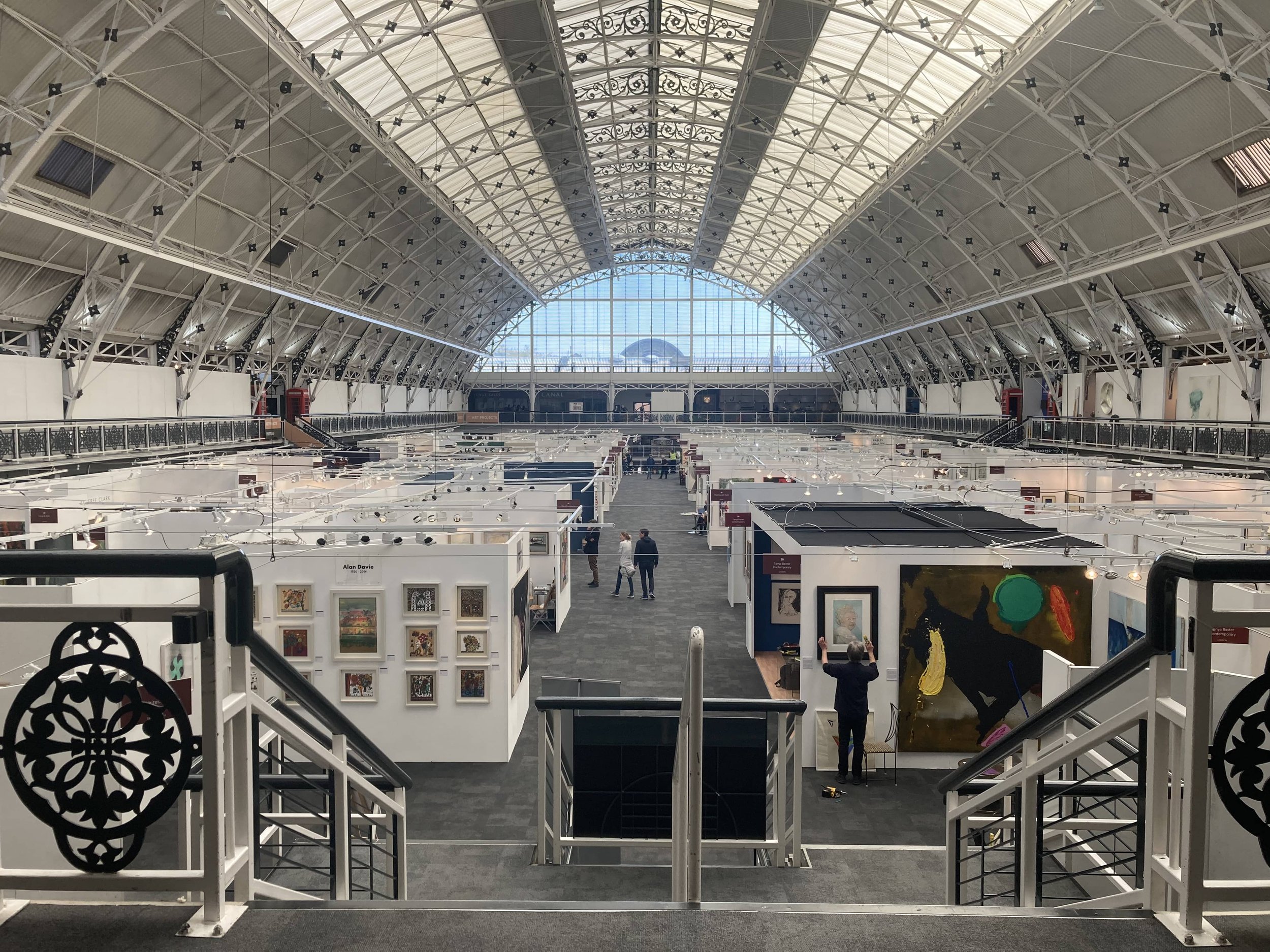Mental Fairtigue: Marice Cumber @ London Art Fair
In the wake of you-know-what, the art world was categorically undecided as to whether art fairs would survive market conditions following a worldwide two-year hiatus from large-scale in-person events and international travel–not to mention a global shipping crisis. Would art fairs ever return? Did anybody actually want them to?
Arts fairs are coming back, but even the most prominent fairs are decidedly smaller and more curated. If lockdown taught us anything, it’s that it is no longer enough to just show up with a collection of stock–exhibitors also need a sense of purpose. They must justify expenses more than ever, as buyers want to see what artists have been up to, and everyone is still processing what exactly went down over the past 24 months. Fairs are becoming a testament to the need for post-pandemic reciprocal exchange and a collective gusto to make up for lost time.
London Art Fair at Business Design Centre. Photo by Camille Moreno.
As part of London Art Fair’s Art Projects, a curated section of fresh talent, art consultant and curator Louisa Warfield drew on the theme of Anxiety connected to the “enormous and seemingly mountainous years we have ahead of us,” alluding to climate change, political unrest, widespread economic uncertainty, and the seeming permanence of COVID-19. In her group show, she investigates how artists use their work to manage, control, and dissipate feelings of anxiety.
Art Projects is overseen by Pryle Behrman, an art critic and member of the London Art Fair’s Art Projects Selection Committee. Many of the featured artists also looked inwards at their own emotions, beliefs, and mythologies with a focus on what these subjects meant for the wider world, asking how their own experiences mirror and contrast with those of others, as well how times of reflection and re-evaluation can help us build a better world.
Marice Cumber, The Big Cup of Becoming True to Myself, 2022. 40 x 28 x 45 cm. Photo courtesy of Louisa Warfield.
Warfield’s collection opened with a selection of ceramics by emerging artist Marice Cumber. The comical, oversized mugs have a whimsical presence but tackle the internal, crippling dialogue that Cumber suffered during a 2010 mental breakdown. She found respite in writing endlessly about her own self-disgust, anguish, and inner torment in small notebooks that she hid in the bottom of her wardrobe. It took a decade before she unearthed the writings and began to translate the messages into source material for her sculptural practice.
Marice Cumber, The Urn of Arrival, 2021, 38 x 34 x 37 cm. Photo courtesy of Louisa Warfield.
In reference to her Freedom mug, she states that “everyone’s freedom is different but deep down I know what my freedom is and I know how good it would taste and the only person that has stopped me getting it is me. But it’s my time now and I am going to relish and surround myself with it as I have wanted it for so long and no one is stopping me now.”
Marice Cumber, The Cup of Bouncebackability, 2022. 23 x 25 x 20 cm. Photo courtesy of Louisa Warfield.
Cumber’s oversized ceramic cups contain powerful, sombre messages with equally light-hearted, optimistic, or ironic titles such as The Big Cup of Accepting Responsibility, The Big Cup of Inner Laughter and Pleasure, and The Big Cup of Little Value, to name a few. Each piece has a craggy charm that seems to speak to the inherent acceptance that coincides with the practice of exploring and embracing one’s inner demons and imperfections.
In a landscape of growing mental health awareness, Cumber ultimately demonstrates that creative output can be a platform for confronting torment without losing the potential to be playful, beautiful, and bright. The bold and brave employment of her writings shows us that sharing angst can be an antidote in itself.
The 2022 UK Mental Health Awareness Week is May 9-15, with this year’s theme being “loneliness.” For more information, click here.
Camille Moreno
Features Co-Editor, MADE IN BED










